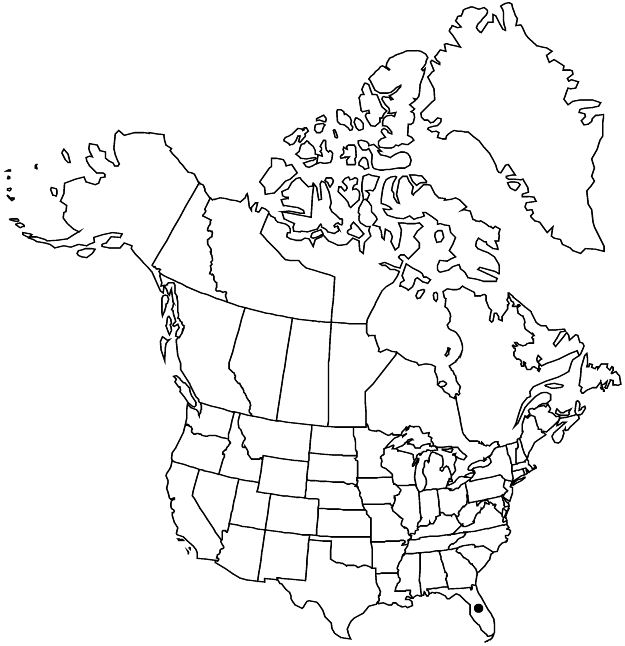Drypetes diversifolia
Bot. Jahrb. Syst. 15: 353. 1892.
Trees to 7(–12) m. Bark white, often with irregular gray or light brown patches, smooth. Buds glabrous, resinous. Leaves: petiole 0.3–1.2 cm; blade ovate to elliptic, 5–9 × 2–4 cm, leathery, base rounded to obtuse, margins entire on adult leaves, spinose-dentate on leaves of seedlings and sprouts, apex usually rounded to obtuse, if acute, not abruptly so; venation coarsely reticulate. Staminate inflorescences: flowers (1–)4–7 per fascicle. Pistillate inflorescences: flowers 1–3 per fascicle. Staminate flowers: sepals (4–)5, oblong to ovate, 2.5–4 mm, densely hairy, not ciliate; nectary slightly lobed; stamens 8(–10). Pistillate flowers: sepals like those of staminate flowers; nectary annular; ovary 1-carpellate; style 1; stigma 1. Drupes white at maturity, ellipsoid to obovoid, 15–20 × 12–15 mm; mesocarp 2–3 mm thick, mealy; endocarp 1–2 mm thick, bony. Seeds 1 per fruit.
Phenology: Flowering late spring; fruiting summer–late winter.
Habitat: Tropical hammocks.
Elevation: 0–10 m.
Distribution

Fla., West Indies (Bahamas).
Discussion
Because of its short blooming period and inconspicuous flowers, Drypetes diversifolia is rarely collected in flower. The fruits persist on the plants long after they ripen. Drypetes diversifolia is fairly common in the Florida Keys but rare on the mainland.
Selected References
None.